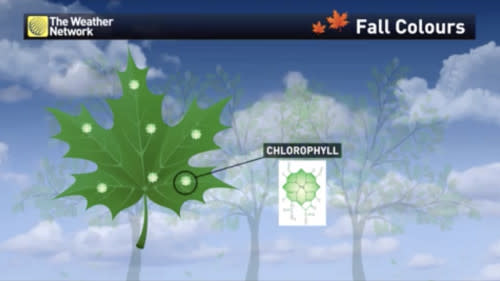Why do we rarely see red on trees during the fall in Alberta?
Why don’t we see much red during an Alberta fall?
It’s a question you might have heard before from your Ontario-born friend.
Sure, they admit, the signature yellow-gold palette of an Alberta autumn can make for a pretty picture.
But, they continue, "Have you ever seen Algonquin Provincial Park in late September? Where are all the reds?"
And, alas, they have a point.
The vast majority of Alberta’s tree canopy lacks the rosy foliage of Ontario’s oak and maple trees. While stunning in their own right, the canopies of the aspen, elm and ash trees common to the Prairies typically flame out with vivid yellows before their trees shut down for the winter.
But why is it that the leaves of some trees don't turn red?
SEE ALSO: The colour blue is elusive in nature. Here's why
The answer is perhaps better explored by asking why some do. And, interestingly, there’s still a lack of consensus around the answer.
“Reds are pretty interesting...It’s not really understood what advantage this provides to the plant,” says Connor Hodgins, who is involved in post-doctoral plant biology research at the University of Calgary.
The yellow pigments in leaves, called carotenoids, aid in photosynthesis and are present all summer but only revealed when the production of green chlorophyll slows down in the fall.

The production of green chlorophyll slows down in the fall, which causes leaves to change colour during cooler months. (Graphic: The Weather Network)
But the red colour comes from pigments called anthocyanins, which are only produced during the fall period. Hodgins says there are a few hypotheses regarding exactly why this occurs.
DON'T MISS: Stunning photos of the Canadian Rockies in the fall
He explains the energy intensive process, which occurs at a time when a tree should theoretically be conserving energy ahead of winter, likely evolved as a way to somehow protect the tree during the fall season.
One theory proposes that the red leaves, which are more effective at absorbing UV light, act as a form of sunscreen for the tree as photosynthesis slows down ahead of winter.
SEE ALSO: Skip the mountains and save on gas with these unique Calgary trails
Another suggests the bright colours could be an attempt to ward off pests like aphids, which might see the vibrancy as a sign that the tree is strong, healthy and capable of defending itself.
But yet another theory suggests the red leaves could actually attract certain animals to the tree, which would then carry its seeds elsewhere.
One thing is certain, though, Hodgins says.
“It’s clearly not advantageous to have that on the Prairies versus eastern Canada.”
Fall in Alberta is brief compared to more southerly regions. The advanced reduction in daylight hours and the onset of colder temperatures both trigger trees to shut down photosynthesis, seal their branches off from the elements and prepare for the winter ahead. This could decrease the need for certain evolutionary adaptations, such as the production of anthocyanin.
“In Ontario, they have a longer fall period. They just don’t head into winter as quickly as we do,” says City of Regina Open Spaces Manager Russell Eirich. “That’s why they get the bigger colour spectrum.”
Regardless, fall is stunning, and fleeting, in Alberta, so make sure to enjoy nature’s annual curtain call while you can.

